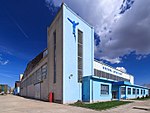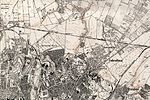Aviației
Districts of BucharestRomania geography stubs

Aviației is a district divided between Sector 1 and Sector 2 of Bucharest, mainly in Sector 1. The name refers to aircraft or airforces. The names of aviation pioneers Traian Vuia, Aurel Vlaicu, and Henri Coandă are related to the name of the district. In the 2000s, the area has become increasingly upmarket, due to the construction of various luxury apartment developments in and around it (as are those in the Pipera–Tunari area). It is also home to many villas constructed before the 1930s that were refurbished in the 1990s and 2000s. Notable buildings: Oracle Tower Autoritatea pentru Valorificarea Activelor Statului (AVAS) Aviation Museum
Excerpt from the Wikipedia article Aviației (License: CC BY-SA 3.0, Authors, Images).Aviației
Strada Elena Caragiani, Bucharest Aviației (Sector 1)
Geographical coordinates (GPS) Address Nearby Places Show on map
Geographical coordinates (GPS)
| Latitude | Longitude |
|---|---|
| N 44.481347222222 ° | E 26.096575 ° |
Address
Bl. 8C
Strada Elena Caragiani 22-30
014214 Bucharest, Aviației (Sector 1)
Romania
Open on Google Maps






